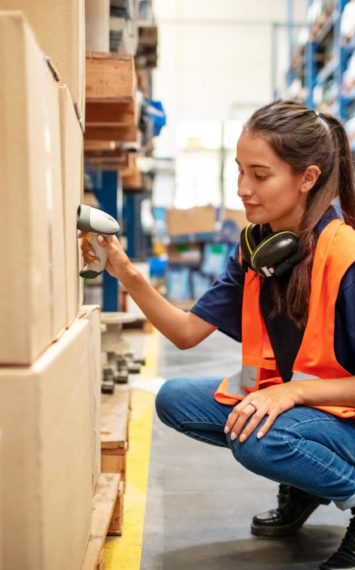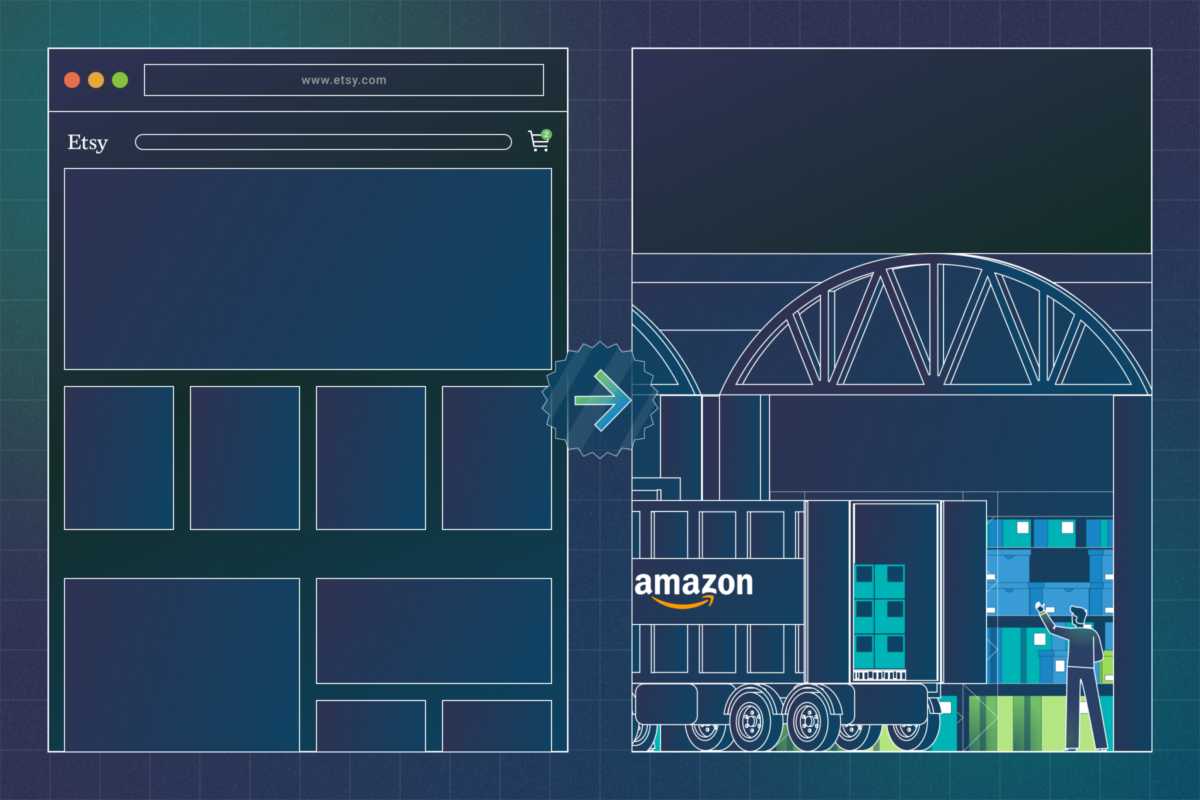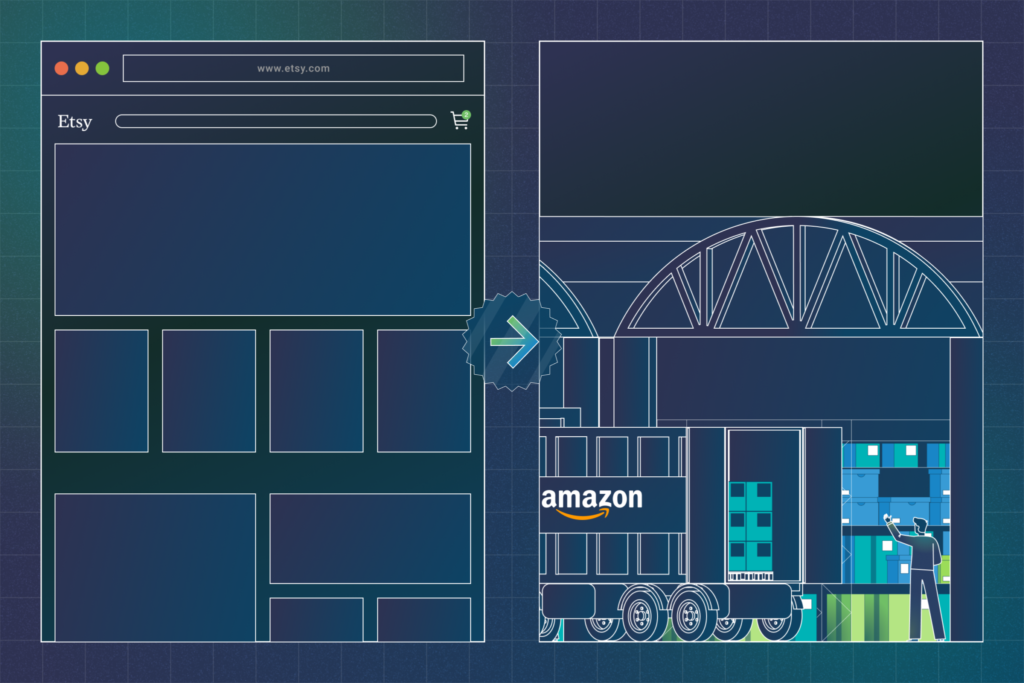Up-and-coming retailers who rely on multi-channel sales are increasing their reliance on Amazon’s FBA to handle fulfillment. This is big news for niche retailers who sell on Etsy.
Amazon Has Found A Way To Make Money Even When You Sell On A Competitor’s Channel, like Etsy.
As we know, Amazon dominates the ecommerce space. It garnered over 50% of all online sales in the US in 2018 according to eMarketer. In that same year, Amazon generated $207 billion from retail worldwide.
And that’s just from their core eCommerce business. According to Investopia, they earned nearly $7.3 billion from Amazon Web Services (which has grown an average of 48% in each of the last 3 years), as well as $10.1 billion from online advertising services.
Amazon is further expanding into the grocery business with the acquisition of Whole Foods, as well as offering prescription drug services and health and beauty supplies.
They are also expanding their product businesses as well with Alexa personal assistant, Fire tablets, Fire TVs and Kindle e-readers and even producing and selling original media content.
In a nutshell, Amazon owns 50% of the eCommerce market in the US. And they are poised to take over the retail world as we know it.
And now they seem poised to dominate the 3PL businesses.
Etsy and eBay Orders Can be Fulfilled on FBA. That’s a Huge Deal.
Many multi-channel sellers are well aware of and utilize Amazon’s logistics service, FBA. They use it to fulfill purchases from Amazon and even from their own site.
Fewer utilize this service for their multi-channel fulfillment. Many sellers were not aware that Amazon will fulfill orders from channels like eBay and Etsy. For an extra fee, Amazon will store ad ship merchandise as well as provide customer service.
Traditionally, Etsy is thought of as the anti-Amazon. When we think Amazon, we think mass-produced goods at the lowest price. But when we think Etsy, we think of something unique or one-of-a-kind.
That’s why to some, it may seem odd for Amazon to get into this. But, you have to smash your notions that Amazon is simply another ecommerce channel. Amazon is a global entity that has successfully diversified their business into virtually every major industry.
Get Growing Faster
To learn more about SkuVault, the world’s most intuitive inventory management software, simply complete the form.

How It Works
Let’s take a step back and examine what FBA actually is. Sellers can store their inventory in one of Amazon’s fulfillment centers, and then pick, pack and ship items as well as provide customer service along the way. Amazon touts it as a way to help sellers scale business and reach more customers.
This service has traditionally been thought of as a way to fulfill Amazon orders as well as orders from sellers’ websites from one place. It has simplified the logistics and fulfillment process for many businesses who have a good portion of sales coming through Amazon, as well as their website.
For Amazon, this move shows that they have found another way to not only expand into a new market, they are getting a marketing boost as well. And profit off of it.
Since the package arrives in full Amazon garb, it’s like having your logo added to your competitors direct to consumer marketing, and getting paid to do so!
Is Amazon Officially Entering The 3PL Business?
Knowing what we know about Amazon’s growth model, it was inevitable that they would expand their logistics service to accommodate fulfillment from other channels. For an extra fee on top of the basic FBA cost (up to 75% more), Amazon will fulfill orders from channels as well.
With the recent surprise news that Fedex Express is cutting ties with FBA, this opens the door for Amazon to simply launch their own shipping and logistics company. They are already venturing into this with the launch of Amazon Air.
They could simply undercut traditional logistics companies like FedEx or UPS on price, and take them over. We’ve seen this happen before.
Of course, they have many regulatory hoops to jump through before that happens. The FTC is already all over their move to simply fulfill Etsy and eBay orders, so there is a long way to go before the above scenario is a reality.
Is This A New Service?
This service has been available for several years now and any marketplace that is compatible with the FBA setup is technically eligible for the service. Many sellers have been utilizing this service for some time, while it is brand new to others.
The reason it’s in the news now is because of the price hike of up to 75% for fulfilling eBay and Etsy orders. This price discrepancy has caught the attention of the FTC, who has opened an investigation into potential antitrust violations. This, among other things such as unfair competitive advantages related to Prime bundling, and the well-known issue of Amazon undercutting its own sellers.
There are some restrictions on items that can be shipped on FBA. But not enough to prevent online retailers from making FBA their fulfillment option of choice.
The main consideration is cost. The 75% price increase to use FBA on Etsy and eBay orders may seem high, but consider the potential value. How much would it cost you to store, package and ship your merchandise?
What Does This Mean for Online Retailers?
For online sellers, this can be an attractive option because it simplifies logistics, saving time and money. In many ways, it can be one less thing they have to think about. And if you run a small, lean operation, it can be invaluable.
Some businesses have decided that it’s worth the extra cost to let Amazon do it. Especially if a significant amount of sales already come from the Amazon channel. If that’s the case, you will likely have a large amount of merchandise already allocated to your FBA warehouse. Why not just put it all there?
In today’s landscape there are many good 3PL options to choose from. But many retailers who find that a large chunk of their business comes through Amazon anyway find that using them as their 3PL makes a lot of sense.
Using this service allows them to cut down on overhead, and have one less vendor to work with. The per-order pricing model also allows this to be a scalable alternative to a long term 3PL commitment.
Many growing businesses, especially niche retailers like those who sell on Etsy, are taking advantage. And the market (along with the FEDS) is taking notice.


